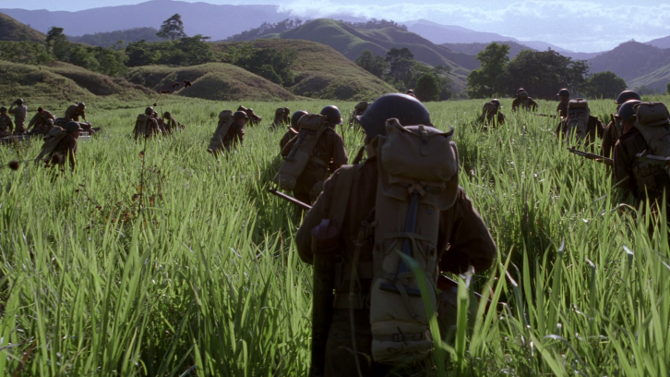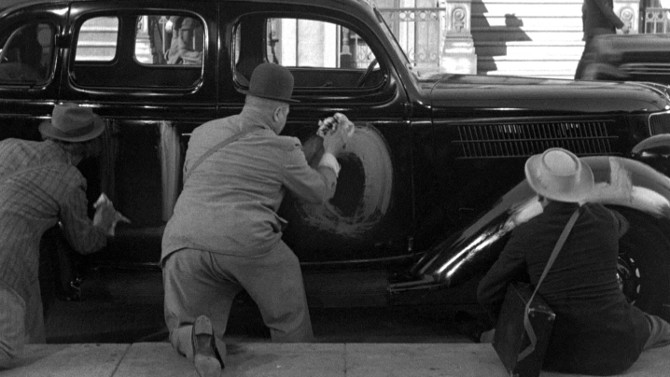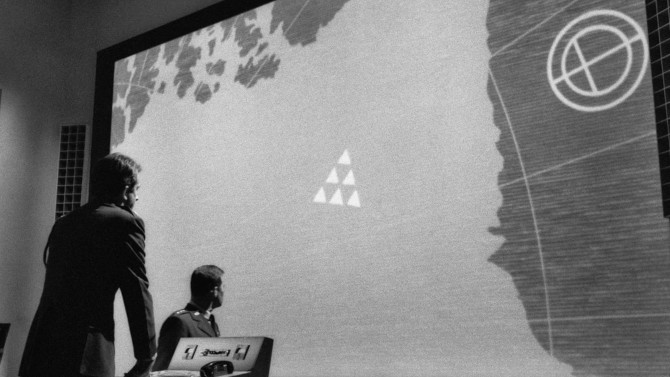
Safety First
Like a severe and utterly serious version of Stanley Kubrick’s 1964 satirical dark comedy Dr. Strangelove or: How I Learned to Stop Worrying and Love the Bomb, you would think that Fail Safe would have been the original release in theatres that was then later spoofed, yet that is not the case. Released approximately six months later in the same year, as you might imagine, it led to very poor returns at the box office – dare I say it (as the film deals with this subject matter)... it was a bomb! Despite that, over time, it has become a bonafide classic. Based upon Eugene Burdick’s 1962 novel of the same name and directed by Sidney Lumet (Dog Day Afternoon), he introduces us to our main players by way of little vignettes.
-
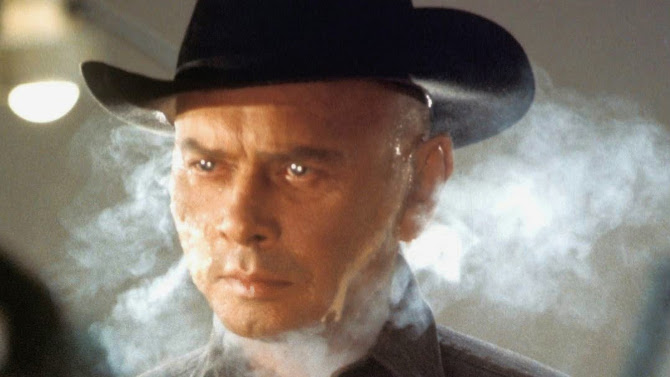
A Whole New ‘West’World
WestworldMay 21, 2017Many of you have probably heard of, and may be watching, HBO’s stellar hit show, Westworld. An intriguing premise to say the least, quite a few people do not realize that it is actually based on a 1973 movie of the same name, written and directed by famed novelist Michael Crichton – his first foray into the world of film making. Set in the not so distant future, this sci fi flick is infused with a classic western twist, as guests head to an amusement park to live out their fantasies in one of three worlds (Roman World, Medieval World and of course, Westworld). With a hint of being a precursor to a dystopic world, we are introduced to our two leads, first time attendee Peter Martin (Richard Benjamin) and his more experienced friend – at least, in relation to the very realistic park, John Blane (James Brolin), in a spacious, futuristic plane on their way to the locale.
-
Star Pick with Rod Blackhurst
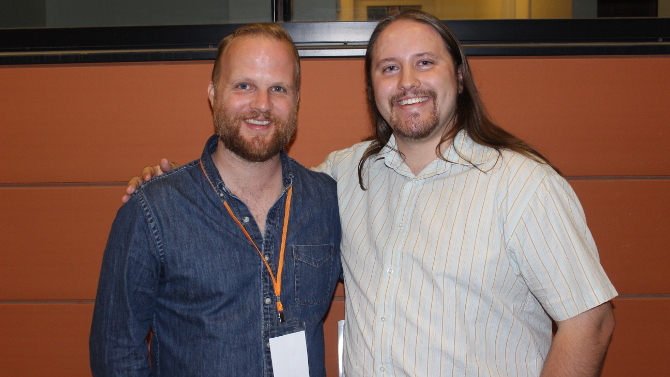 Tow the LineThe Thin Red LineMay 16, 2017
Tow the LineThe Thin Red LineMay 16, 2017Pulling its title from the novel (written by James Jones) that it is based on, Terence Malick’s 1998 film, The Thin Red Line, which was nominated for seven Academy Awards, brings together a who’s who ensemble cast to tell the tale of an intense World War 2 story set in the Pacific Theatre, specifically, the Guadalcanal Campaign. Over the past several weeks you have read about the filmmakers behind the Tribeca Audience Award winning movie, Here Alone – first, producer Noah Lang, and secondly screenwriter David Ebeltoft. Today’s Star Pick will feature the motion picture’s director, Rod Blackhurst. An up and coming director in the business, he has had great success from the beginning. The first time I came across some of his work, funnily enough, was by accident.
-
A Double Dose of Hilarity
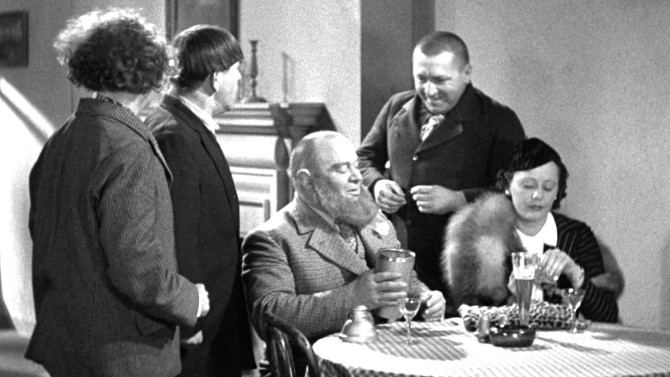 Grips, Grunts and GroansDizzy DoctorsMay 12, 2017
Grips, Grunts and GroansDizzy DoctorsMay 12, 2017Gaining prominence during The Great Depression, it is no secret why the silly, farcical slapstick comedy of The Three Stooges was a hit with audiences – as their crazy antics onscreen were able to give those watching a short respite from their complicated, downtrodden lives. Signing on with Columbia in 1933, the trio of nyuksters we all now know (Larry, Curly and Moe) became ‘short film’ icons in 1934 (prior to this, it was Ted Healy and His Stooges), continuously developing new projects (sometimes with Shemp or others) until their last in 1970 (their stint at Columbia ended in 1959 with their 190th feature) – an impressive run to say the least. Their first short of 1937 (and twentieth overall), Grips, Grunts and Groans (a very Stoogey title) finds the impoverished triumvirate riding the rails. Fleeing after getting the better of a pair of railroad police, they find themselves in a wrestling and boxing club, somehow befriending a behemoth named Ivan Bustoff (Harrison Greene). Run by the mob, the gangsters have placed a whopping bet on their wrestler.
-
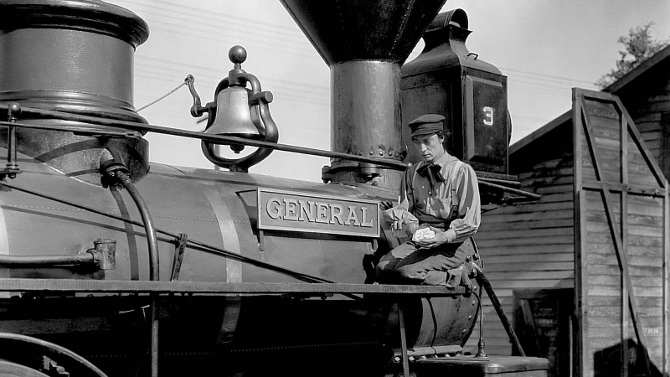
I Like Trains. . . In General
The GeneralMay 9, 2017The General, often considered to be Buster Keaton’s magnum opus (and for good reason – thankfully it was re-evaluated after its initial release, which was not kind), also falls into the realm of being one of the most important train and Civil War films ever produced. To those who do not know the motion picture, they will likely believe that the title refers to the military designation, though it is actually the name of the train the story revolves around. Basically an intricately plotted, lengthy chase, Keaton co-wrote and co-directed the story along with Clyde Bruckman, it being based upon a famous, true Civil War happening, ‘The Great Locomotive Chase’ (also known as Andrews’ Raid). Keaton takes on the role of Johnnie Gray, a train engineer living in Georgia just as the bloody 1861 hostilities boil over. In love with only two things, his beloved locomotive and an angelic, brown haired woman, Annabelle Lee (Marion Mack), he is told by his love that he too must enlist (like her father and brother). The first in line, they reject him, seeing his present job as being of the utmost importance for the South.
-
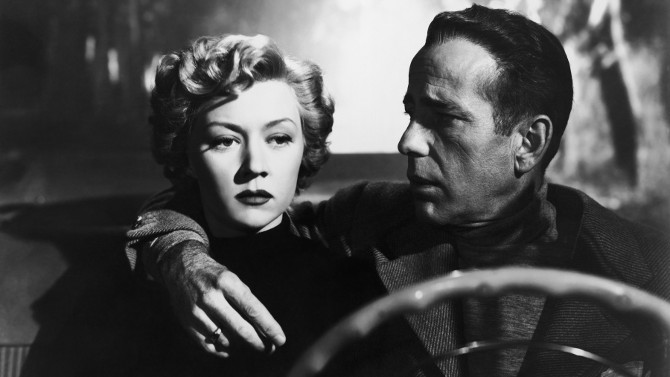
When Art Imitates Life
In a Lonely PlaceApril 25, 2017A man – lonely, laconic and quick to anger. A woman – cool, collected and in hiding. Both live in the same apartment complex in The City of Angels. Murder brings them together, but will it keep them together? Written by Andrew Solt and directed by Nicholas Ray, In a Lonely Place immerses us within the world of a Hollywood screenwriter, the rough-and-tumble, explosive Dixon ‘Dix’ Steele (Humphrey Bogart – who also produces the film); an apropos name to be sure. Struggling with a multitude of demons, he is quick to anger and even quicker to act. Despite not having a hit since before the war, he is given a solid opportunity by his agent, Mel Lippman (Art Smith), who asks him to adapt a novel. Seemingly uninterested, he invites the club’s hat-check girl, Mildred Atkinson (Martha Stewart. . . not that Martha Stewart), to his home to summarize the book for him (as she has just finished reading it). Following their business, he sends her on her way, directing her to where cabs usually gather nearby.
-
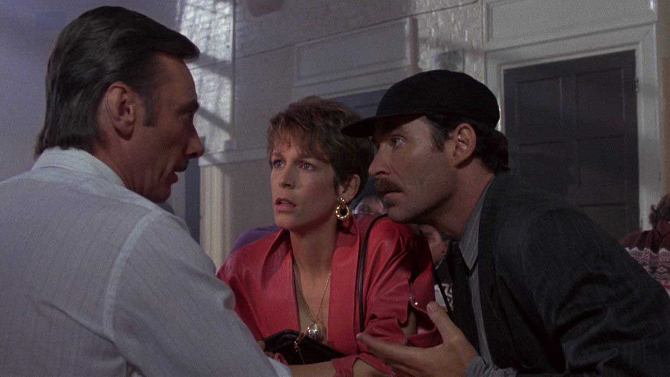
A Deliciously Fishy Caper
A Fish Called WandaApril 21, 2017Satirizing the stereotypical nature of Brits and Americans, John Cleese’s 1988 film A Fish Called Wanda, directed by Charles Crichton, is a kooky heist movie with loads of quirky humour. Following a gang of bank robbers, the group consists of a comic version of a femme fatale, Wanda (Jamie Lee Curtis), her secret lover pretending to be her brother, Otto (Kevin Kline), as well as an English duo, Georges Thomason (Tom Georgeson) and the severely stuttering Ken Pile (Michael Palin – he based the part on his father, who dealt with a similar issue). To further complicate things, Wanda is sleeping with Georges and is prone to flirting with Ken. Filled with doublecrosses and complications, Georges soon finds himself in jail – not knowing who put him behind bars. With only one quasi-witness, an elderly lady who spotted the man while they were driving away from the scene of the crime, the prisoner turns to his longtime compatriot Ken to finish the woman off in a way that will look accidental – knowing that without her, the case falls flat.

